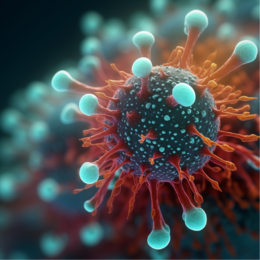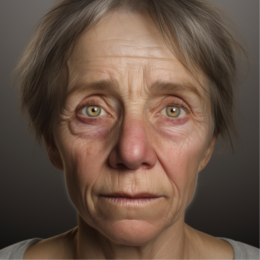What Is Usually the First Sign of HIV?

Human Immunodeficiency Virus (HIV) is an illness that has garnered worldwide attention since its discovery in the early 1980s. However, despite increased awareness and advancements in treatment, the stigma and misunderstanding surrounding the condition persist. Let’s delve into this complex topic, starting with an explanation of HIV, its early signs, and much more.
What Is HIV?
HIV stands for Human Immunodeficiency Virus. It is a lentivirus, which is a type of retrovirus that attacks the human immune system. When a person becomes infected with HIV, the virus gradually weakens and damages their immune system, making it harder for the body to fight off infections and diseases.
HIV primarily targets CD4+ T cells, a type of white blood cell that plays a crucial role in helping the immune system combat infections. As the virus replicates inside these cells, it destroys them, leading to a decline in the overall number of CD4+ T cells in the body.
What Is Usually the First Sign of HIV?
The first sign of HIV is typically a flu-like illness that occurs two to four weeks after infection. This is often referred to as acute HIV infection. Symptoms can include fever, fatigue, swollen lymph nodes, and sore throat. These symptoms occur as the body responds to the HIV infection and are not a direct result of the virus itself.
Other Common HIV Symptoms
Apart from flu-like signs of HIV, it can cause:
- Rapid weight loss
- Recurring fever or profuse night sweats
- Prolonged swelling of the lymph glands
- Pneumonia
- Chronic diarrhea
- Sores of the mouth, anus, or genitals
- Red, brown, pink, or purplish blotches on or under the skin, inside the mouth, nose, or eyelids
Possible HIV Symptoms in Women
In addition to the general symptoms, women may also experience:
- Changes in menstrual cycles
- Pelvic inflammatory disease
- Recurrent vaginal yeast infections
- Severe cervical dysplasia
Stages of HIV
HIV progresses in three stages if left untreated.
Acute HIV Infection (Stage 1)
This stage typically begins two to four weeks after infection and may last several weeks. Symptoms during this stage may resemble the flu and can include fever, fatigue, swollen lymph nodes, sore throat, rash, and headaches. The virus multiplies rapidly at this stage, leading to a high viral load, and individuals are highly contagious.
Clinical Latency (Stage 2) or Chronic HIV Infection
During this stage, the virus slows its reproduction, and symptoms may disappear. Without treatment, this stage can last for a decade or longer, but some people may progress faster. People in this stage can still transmit HIV but are less contagious than in the acute stage.
AIDS (Stage 3)
AIDS is the final stage of the HIV infection. At this point, the immune system is severely damaged, and the person becomes vulnerable to opportunistic infections and cancers. The CD4 count is less than 200 cells per cubic millimeter of blood (normal ranges are between 500-1,600), or the person has an opportunistic illness. Without treatment, people with AIDS typically survive about three years1.
With antiretroviral therapy (ART), the progression of HIV can be dramatically slowed, and many people with HIV do not ever develop AIDS. The sooner HIV is diagnosed and treatment begins, the better the outcome.

Who Is at Risk for HIV?
HIV is primarily transmitted through unprotected sexual contact, sharing of needles in drug use, or from mother to child during birth or breastfeeding. People at high risk of contracting HIV include:
- Those who have unprotected sex
- Intravenous drug users
- People with multiple sexual partners
- Individuals with sexually transmitted diseases
Statistics:
- About 1.2 million people in the United States are living with HIV. Of those people, 1 in 7 do not know they have the virus. [6]
- Although anyone can contract HIV, it is most prevalent among men who have sex with men. In 2018, this group accounted for 69% of all new HIV diagnoses. [6]
- People who inject drugs accounted for 7% of new HIV diagnoses in 2018. [6]
- In 2020, 37,968 people received an HIV diagnosis in the United States and dependent areas. [6]
- The southern states bear the greatest burden of HIV, accounting for 52% of new HIV diagnoses in 2018. [6]
- Globally, an estimated 38 million people are living with HIV. Sub-Saharan Africa, home to about 1% of the world’s population, accounts for nearly two-thirds of all people living with HIV worldwide. [7]
While these statistics might seem alarming, it’s important to know that HIV is preventable. Condom use, regular testing, pre-exposure prophylaxis (PrEP), and not sharing needles are all effective strategies to reduce the risk of contracting HIV.
Is HIV Curable?
There is currently no cure for HIV, but it can be managed with antiretroviral therapy (ART), a combination of medications that suppress the virus’s replication and help maintain the immune system’s function. Early detection, access to healthcare, and adherence to treatment can significantly improve the quality of life and life expectancy of people living with HIV. Additionally, preventive measures such as practicing safe sex and avoiding sharing needles can reduce the risk of HIV transmission.
FAQs
How Long Does an HIV Rash Last?
A rash caused by acute HIV infection can last anywhere from a few days to several weeks.
How Early Do HIV Signs Start?
Symptoms can appear anywhere from 2 to 4 weeks after infection.
What Is the Main First Symptom of HIV?
The first and most common symptom is a flu-like illness.
Final Thoughts
Understanding HIV, its symptoms, and its progression is crucial for early detection and effective management. Even though HIV doesn’t have a cure, people living with the virus can lead full and fulfilling lives with proper medical care. Always practice safe sex and regular testing if you are at risk.
References:
- Centers for Disease Control and Prevention (2021). About HIV. https://www.cdc.gov/hiv/basics/whatishiv.html
- Mayo Clinic (2021). HIV/AIDS. https://www.mayoclinic.org/diseases-conditions/hiv-aids/symptoms-causes/syc-20373524
- American Sexual Health Association (2021). HIV/AIDS. http://www.ashasexualhealth.org/stdsstis/hivaids/
- World Health Organization (2021). HIV/AIDS. https://www.who.int/health-topics/hiv-aids#tab=tab_1
- Centers for Disease Control and Prevention (2021). Stages of HIV Infection. https://www.cdc.gov/hiv/basics/livingwithhiv/stages.html
- Centers for Disease Control and Prevention (2021). HIV in the United States and Dependent Areas. https://www.cdc.gov/hiv/statistics/overview/ataglance.html
- World Health Organization (2021). HIV/AIDS. https://www.who.int/health-topics/hiv-aids#tab=tab_1





